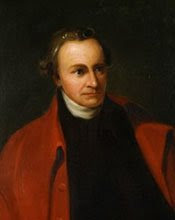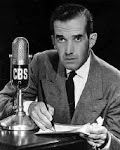
WASHINGTON – The folks who sneaked into the president's state dinner are part of a long tradition of people showing up as they please at the People's House. It's just that the tradition vanished ages ago.
Americans staked their claim to the White House in muddy boots on fine carpet, picnicked on the grounds, parked their carriages and then their cars outside and tromped inside to look for the man, often finding him. They did not need invitations, engraved or otherwise.
Many were ordinary people. Others were social climbers, gate crashers, fence jumpers, patronage job seekers, cranks and crazies.
Why so loose? A child's primer from the Civil War explained that there is an essential difference between an imperious monarch and an American president.
"How are emperors and kings protected?" it asked. "By great troops of guards; so that it is difficult to approach them. How is the president guarded? He needs no guards at all; he may be visited by any persons like a private citizen."
Try that now.
Tareq and Michaele Salahi more or less did. The Virginia couple's caper angered President Barack Obama, mortified his troop of guards, left a mum White House social secretary doubtlessly embarrassed and sent ripples of fear through lawmakers that the security breach, if achieved by a malcontent, might have caused a "night of horror," as one put it.
No, it's not the 1800s anymore. Or the 1900s, for that matter.
Thomas Jefferson wanted the Executive Mansion, opened in 1800, to be accessible, not a palace separated from serfs.
Even the idea of stationing guards in and around the complex was considered inappropriate through the 19th century; their presence was only tolerated when the city itself was threatened in wartime.
So says a federal report that reviewed White House security and access after a disturbed pilot crashed his small plane on the grounds and a man sprayed bullets from outside the fence, both in 1994. The report, rich in capturing the history of openness at the White House, was written by a panel that recommended the closing of Pennsylvania Avenue to traffic outside. That happened in May 1995.
Few remember now that until World War II, the public could freely roam the White House property, gates opening to the masses in the morning and closing at night. The attack on Pearl Harbor was one of many events that tightened security several significant notches.
"The gates at the beginning were more to keep cows out than they were to keep people out," said Donald Ritchie, the Senate historian. "This was a very open government and very open city."
Historian Doris Kearns Goodwin cited accounts of "backwoodsmen with their muddy boots standing in line with diplomats."
Abraham Lincoln welcomed visitors who routinely lined up for hours seeking employment, Goodwin said in an interview. When his secretary told him, "you don't have time for these ordinary people," he is said to have replied "You're wrong." He considered the visitors his "public opinion baths."
Facing frequent death threats, Lincoln used policemen in plain clothes with concealed arms to serve as "doormen" in the mansion, while uniformed guards were posted outside.
His bodyguard at Ford's Theatre had left his post, either to drink at a nearby saloon or watch the play from the gallery, when John Wilkes Booth fatally wounded the president.
Despite the assassination, access eased again after the Civil War.
In a ritual that lasted through the first quarter of the 20th century and the assassinations of James A. Garfield and William McKinley, presidents and their wives would come to the East Room most days to say hello to members of the public who had stopped by. Edith Roosevelt, Teddy's wife, used to say life in the White House was like living above the store because average people came in so easily, Ritchie said.
For all the assaults on presidents, none has been injured by an intruder actually on the property.
It's a wonder.
The British torched the house in 1814 after President James Madison had fled. Chaotic, drunken crowds spilled into the residence for the inaugural reception of Andrew Jackson in 1829, forcing the president to escape.
Several drivers literally gatecrashed and got through in their vehicles until 1976, when reinforced gates replaced old wrought iron ones. A man tested the new defenses in his pickup, slamming into the gates at 25 miles an hour. They didn't buckle. Now, obstacles prevent vehicles from getting that far.
In 1994, a deranged pilot slammed his plane into the lawn when President Bill Clinton wasn't home, and another man fired a semiautomatic assault rifle, hitting the North Facade and puncturing a West Wing window while Clinton was elsewhere in the complex.
The people protected the People's House that day — three nearby citizens subdued the gunman before authorities got to him.
Today, people still tour White House staterooms, submitting advance requests through members of Congress. It's a faint echo of the ethic willed down from the ages that the people have a right to be there.
The husband and wife who slipped into the Nov. 24 state dinner were better dressed than the drop-bys of old, but caused more of a stir.
Commenting on the open mansion of the early 1800s, the author James Fenimore Cooper wrote: "I have known a cartman to leave his horse in the street and go to a reception room to shake hands with the President.
"He offended the good taste of all present," he went on, "because it was not thought decent that a laborer should come in dirty dress on such an occasion; but while he made a trifling mistake in this particular he proved how well he understood the difference between government and society."
Cooper meant that the ragged cartman did not belong in high social circles but very much belonged in that room with the president — his political equal.


















No comments:
Post a Comment